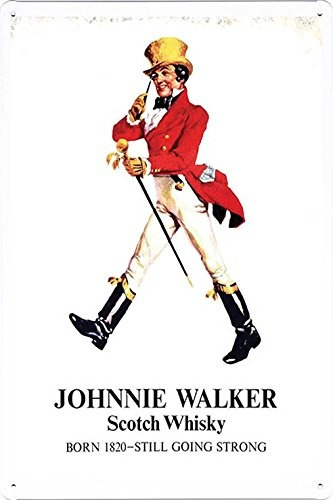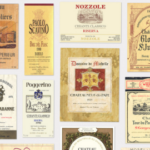Following his father’s death in 1819, Scotsman Johnnie Walker transitioned from working on a family farm to running a grocery shop in Kilmarnock. He discovered he not only had a natural talent for business but a passion for whisky as well. During the early 19th century, most grocers stocked a line of single malt whisky, but Johnnie noticed that the batches were never very consistent. In a stroke of genius, he decided to start blending the batches together to give his customers a reliable taste they could count on, and this became a popular staple in his shop.
After Johnnie’s death in 1857, his thriving business was passed down to his son, Alexander. At that time, the Industrial Revolution was booming, and the railway had arrived in Kilmarnock, carrying goods from small towns and cities alike to great ships for distribution around the world. In 1867, Alexander copyrighted and officially launched the first Johnnie Walker commercial blend of scotch, calling it “Old Highland Whisky.” He coordinated with the ships’ captains to promote his whisky by hiring them to serve as his agents and carry his whisky around the globe.
Unfortunately, these worldwide treks left many bottles broken before they arrived at their destinations. In 1870, Alexander updated the Johnnie Walker bottle design from a typical cylindrical shape to a square to reduce breakages and lost profit. This made packing bottles easier and maximized space on ships. He also began using the brand’s now-iconic label, slanted at a 20-degree angle, to allow space for more text and ensure it would continue standing out from the crowd. Alexander left the business to his sons, master blender Alexander II and astute businessman George.
In 1909, Alexander II and George were largely responsible for turning the company into the legacy brand we know today. They expanded the successful line of whiskies and re-registered them after the colors of their labels. Special Old Highland became Johnnie Walker Red Label and Extra Special Old Highland became Johnnie Walker Black Label. Local illustrator Tom Browne sketched a figure now known as the Striding Man logo, and this Victorian dandy turned into the new face of Johnnie Walker.
By 1920, Johnnie Walker’s Scotch blends were available in 120 countries around the world. They quickly became an integral part of global culture, with everyone from songwriters, filmmakers, and movie stars to statesmen and sportsmen singing the brand’s praises and immortalizing it across a variety of creative realms. In 1934, Johnnie Walker was the top-selling Scotch whisky in the world, and King George V granted John Walker & Sons a Royal Warrant to supply the whisky to the royal household, which is still held to this day.
This award-winning whisky brand has continued to add new lines to inventory. At the end of the 20th century, Johnnie Walker Red Label and Black Label have been joined by Blue Label, Green Label, Platinum Label, Gold Label Reserve, and Johnnie Walker Aged 18 Years. Johnnie Walker is still considered the world’s biggest whisky brand, and even the most discerning whisky connoisseurs enjoy the extraordinary depth and bold flavors of these blends.
If you want to experiment with Johnnie Walker’s scotch whisky blends, contact Payless Liquors today to order online and pick up your haul curbside.













